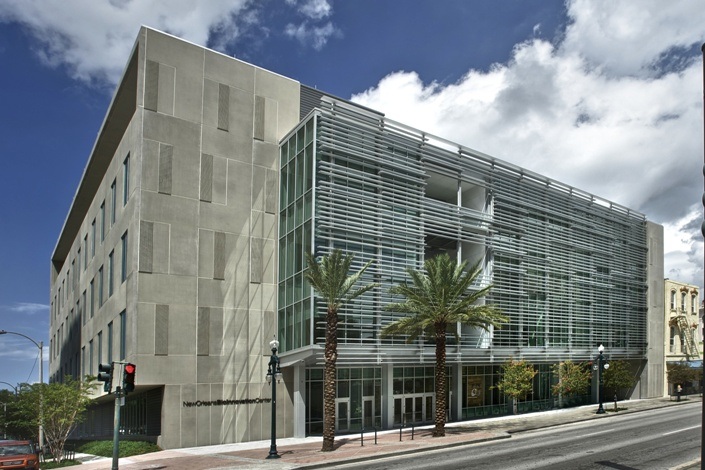Code Green Solutions


LEED Gold certified New Orleans BioInnovation Center
Michael Deane is vice president and chief sustainability officer at Turner Construction which was recently named Engineering News-Record’s #1 Green Building Contractor for the 7th year in a row. Turner has completed over 380 LEED-certified projects encompassing over 79,000,000 square feet and employs more than 1,500 LEED-accredited staff.
Q: With so many LEED certified projects under your belt, how do you define the business proposition for your clients to pursue LEED certification?
A: The business case for LEED certification has always been about better economic and environmental performance over the life of the building and the increased asset value that comes with LEED certification. When I came to Turner in 2004, I was often involved in pursuing new projects and overseeing project operations. Today, I am less likely to be directly involved in those types of conversations with our clients. This is a testament to the success of the business model we created 10 years ago where we decided there would not just be a ‘sustainability swat team.’ Instead, we decided to educate and empower our entire organization with all the tools necessary to win and execute LEED projects. Promoting sustainability is something we do every day in every market sector of our business.
Q: How has the conversation about sustainability changed through the years?
A: The business case conversation has always been somewhat frustrating for me. The business case has always been pretty much of a ‘slam dunk.’ Nine times out of 10, the owner pursues LEED because they believe certification will reduce operating costs and enhance the value of their asset, which is true. However, we have been so successful promoting the economic advantages that we often forget to discuss the environmental benefits.
Q: Turner has motivated clients to pursue LEED–What is Turner doing internally to showcase your sustainability initiatives?
A: We made our first formal commitments around sustainability in 2004. In 2006, we added a number of policies that were about our own business operations. For instance, Turner has an internal policy that that all new or renovated offices must pursue LEED certification. Currently, 22 of Turner’s office are LEED certified and eight have installed energy dashboard tools. These tools display energy use in real time and are used to identify inefficiencies. In a recent energy saving competition amongst those eight offices, two offices reduced their energy usage by 48% and 52%.
Q: What is the Turner Green Zone and how was it created?
This is a great example of something that spontaneously happened at the grassroots level. When we were building Yankees stadium in 2009, a team created a checklist for our field offices modeled on the LEED checklist. There are five categories that include: recycling, waste, water efficiency, Energy and Innovation and Design. It follows the LEED framework and it gives teams a way to gauge sustainability best practices in the field.
Q: What’s the motivation for these teams to pursue Turner’s Green Work Zone?
A: It’s partially for the bragging rights but it also pushes for accountability, energy and water efficiency and health and safety for our employees on job sites. Last year 311 projects completed the survey and 199 were certified Turner Green Zone projects. My goal has been for us to use the Turner Green Zone as the standard for all our job sites.
Q: How does the owner go about setting the sustainability standards you follow for each project?
A: There are certain minimum standards we follow on all projects, whether LEED or not. These include: site-specific waste management plans, erosion and sedimentation control plans and indoor air quality management plans. We have combined our site safety training and our sustainability training into a single required session for all job site workers. Beyond that, we work with the owner and the design team to set appropriate sustainability goals for each project. We add value to the process by offering the benefit of our experience on more than 600 LEED Projects. But at the end of the day, it is the owner’s decision about what measures to implement. Our job is to provide the information about costs and benefits so the owner can make an informed decision.
Q: How do you then motivate the owner towards more sustainable practices?
A: Since 2009, more than 50% of all our sales by volume have been projects pursuing LEED, so I would say that we have been very successful at selling sustainability in our projects. I always remind people that sustainability is constantly evolving. It’s not a check the box activity but is a process of continual improvement.
Thanks Michael Deane for Turner Construction’s take on the business case for sustainability. Please follow my Sealing the Deal for Sustainability series as I explore the benefits of sustainability in the global markets with industry leaders.